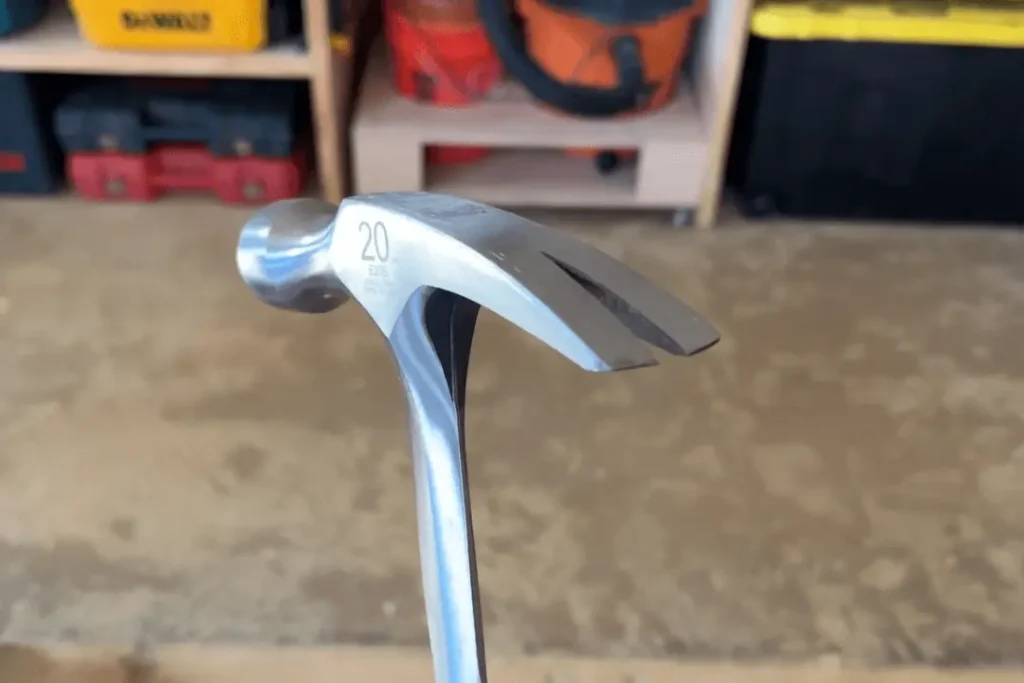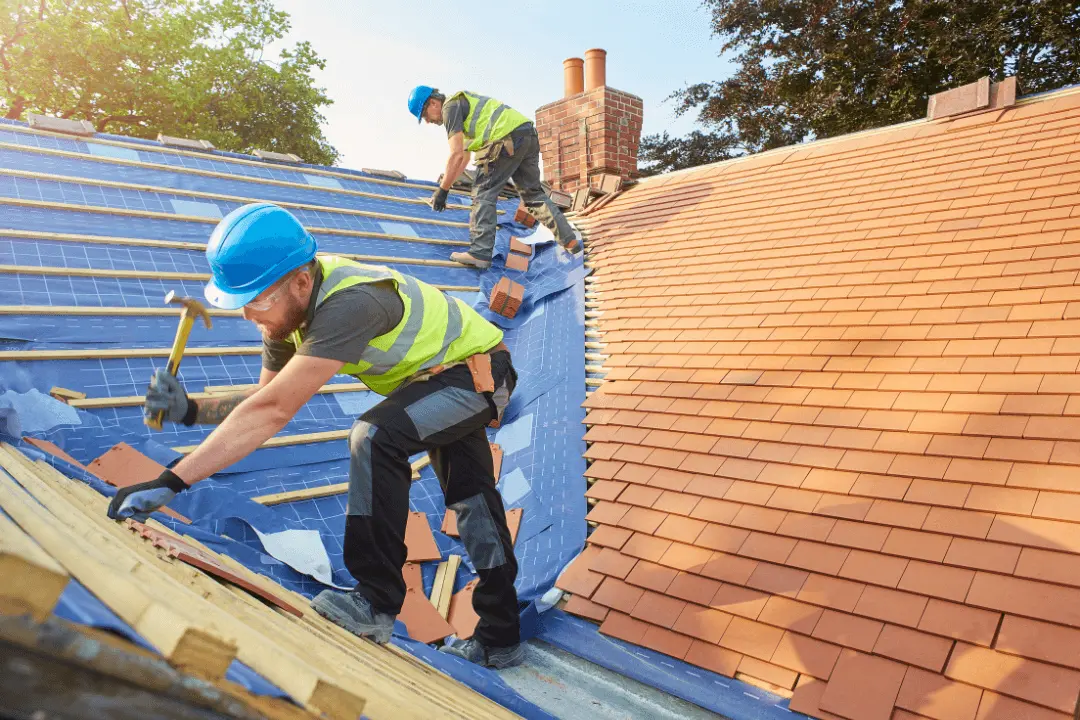What is Roofing Hammer: Unveiling the Secrets
The roof, as a vital defense against the elements, requires specialized tools for maintenance and repair. The roofing hammer is a powerful and versatile tool specifically designed to handle the unique challenges that arise from rooftop projects.
In contrast to its more common counterpart, the framing hammer, the roofing hammer, comes with numerous features that are specifically made for nailing shingles, cutting off old ones and creating a sturdy and durable roofing.
Whether you’re a skilled roofing expert or an adventurous homeowner who is attempting DIY roofing repairs, knowing what a roofing hammer is crucial. This thorough guide explains the structure, functions and the proper usage of this essential tool for roofing and will enable you to climb the roof’s heights with confidence.
For More Interesting and Informative Articles Check out: smartoolbuddy
Unveiling the Anatomy of a Roofing Hero: Beyond the Standard Hammer

A roofing hammer that is typically between 13 and 14 inches in length is a sturdy tool designed for power and precision. While there are some resemblances to framing hammers, however, it has distinct characteristics which make it the ideal tool for the demands of roofing work. Here’s a list of its most important elements:
- Head Built on forge steel to ensure durability The head of the roofing hammer is heavier than the framing hammer it is paired with. This extra weight permits stronger strikes to secure nails through tough roofing materials such as shingles.
- Nail Slot (aka Hammer Notch): This V-shaped notch that is carved through the top part of the skull has two important functions:
- Shingle Removal This slot acts as a leverage point which allows you to access the roof nail’s head for a more efficient removal of shingles.
- Shingle Alignment The notch may be utilized as a precise reference to place the next layer of shingles when it is installed and ensures consistent shingle exposure which is essential to ensure good roof ventilation and drainage.
- Shingle Gauge (Optional): Some roofing hammers have an inbuilt shingle gauge mounted located on the back of the head. This feature helps eliminate any guesswork, as it provides an indicator of the right shingle size. Consistent exposure is vital to ensure optimal roof performance and to avoid issues such as air leaks or inadequate ventilation.
- Claw Different from the straight claw on a framing hammer that is designed to remove nails The claw on a roofing hammer may be either straight or curly and each has its own advantages:
- Curved Claw: This design offers more leverage to remove the shingles that are stuck to the deck of the roof.
- Straight Claw (Optional): Although it isn’t the best tool for ripping straight claws, a straight one is a great tool for cutting or ripping, adding to the tool’s versatility overall.
- Handle Most commonly made from fiberglass or wood for an ergonomic grasp, the handle needs to be sturdy and balanced to stand up to the demands of prolonged use on a roof.
Choosing the Right Roofing Hammer: Finding Your Perfect Match for Rooftop Success

The right roofing hammer will depend on your individual needs and requirements. Here are some of the most important aspects to take into consideration before making a decision:
- Head weight: Heads that are heavier offer more power to drive nails through thick shingles, however, they can be exhausting when used for long periods of time. Opt for a weight that is well-fitting and offers effective control.
- Claw Style: Curved claws excel in removing shingles, however straight claws may be preferable if occasionally minor cutting tasks are expected.
- Shingle Gauge (Optional): If the shingle’s exposure is consistent and an issue, a hammer that has an integrated gauge is useful in reducing time and ensuring an optimal performance of your roof.
What’s the main difference between the roofing hammer and the framing hammer?
Here’s a rundown of the major differences between roofing and a framing hammer.
| Feature | Roofing Hammer | Framing Hammer |
| Head Weight | More powerful to drive nails through the shingles | Lighter for framing general tasks |
| Nail Slot | Yes, for tearing roofing shingles and for positioning | No |
| Shingle Gauge (Optional) | Yes, to ensure consistent exposure of shingle | No |
| Claw Design | Curved (better to pry) as well as Straight (optional) | Straight |
| Primary Use | Removal of the Shingle | Framing walls and construction structures |
Mastering the Art of the Hammer: Techniques for Shingling Prowess

Once you’ve mastered the structure and physiology of the what is roofing hammer, we’ll look at some of the strategies to make you a roof nailing expert:
- Safety first: Be sure to consider safety first when at the highest levels. Wear safety glasses as well as gloves and shoes that have adequate traction to avoid falls and slips.
- Shingle removal: Use the slot for nails on the hammer to get under the roof nail. Be gentle in rubbing the nail in a circular motion to loosen it, before taking it completely out.
- Shingle position: Employ the nail slot to precisely place the next series of shingles to ensure a continuous exposure. This allows for the proper drainage and ventilation which will prevent roof problems to occur in the near future.
- Driving nails: Keep the roof Hammer firmly at the top of the handle to ensure optimal control. Hit the nail head precisely using controlled strikes. Be careful not to use too much force, which could cause damage to the shingle or cause the nail to bend. Try to drive the nail into the shingle’s surface, but never any deeper.
- Utilizing using the Shingle gauge (Optional): If your hammer is equipped with an shingle gauge, you can slide the shingle into the proper notch to make sure you have the right amount of exposure before you na
Frequently Asked Questions about What is roofing hammer
Do you think a roofing hammer is required?
Although you could technically employ framing hammers for essential roofing tasks, a roofing hammer has certain advantages, making it indispensable for any roofing job that requires serious attention:
1. Performance: The specialized features like the nail slot as well as larger head makes shingling removal, placement and nailing much quicker and less difficult than a framing-hammer.
2. Specification: The shingle gauge (optional) will ensure a an even shingle exposure. This is essential for a proper roof’s efficiency in the sense of ventilation and drainage.
2. Security: The curved claw (optional) offers more leverage when removing roofing shingles, while reducing the possibility of damaging the shingles around it or hurting yourself.
To ensure optimal outcomes and a safer experience, the use of a roofing hammer is recommended for all roofing projects regardless of size.
Which hammer is the best in roofing?
The ideal hammer for roofing is not surprisingly it’s a roofing Hammer. It comes with features made to meet the specific difficulties dealing with roofing shingles.
How do you hammer roofing nails?
Here’s how to hammer roofing nails securely and efficiently:
Security First Use safety eyewear and gloves. Also, wear sturdy shoes that have good grip.
Setting: Use the nail slot (optional) to align the shingle in a way that it is exposed properly.
Grip and Stance Place the hammer close to the top of the handle, and maintain an upright stance to ensure stability.
Controlled Strikes Try to locate the middle of the nail’s head and then use controlled blows to push the nail into safely. Avoid using too much force, which could cause damage to the shingle or cause the nail to bend. Try to drive the nail into the shingle’s surface, but not any deeper.
Also Read:
The Stanley Anti-Vibe Roofing Hammer – A Comprehensive Detail
Mastering the Roof: How to use Roofing Hammer A Comprehensive Guide


Related Blogs
The Top 10 Best Litter Box for Multiple Cats
5 Best Dry Cat Food for Indoor Cats 2024
Affordable Bluetooth Projector for Gaming: The Best in 2024
The Best Soundbar for Music and Movies for Home Threaters
Stay Powered Up: The Best Portable Charger for iPhone 15 in 2024
The iPhone 15 Pro Max New Features: Comprehensive Features
Liquid Screen Protector vs Tempered Glass: Which is better in 2024
What is a Monkey Wrench: Complete Details
Guide to Cleaning Your Gatorade Bottle The Proper Way
How To Sharpen Garden Hoe: Real Guide to the problem
How to Use a Tack Hammer Nail it Every Time
Easy Ways on How to Clean Garden Tools at Home
Changing a Garden Cart Tire: Expert Hacks That Will Save You from $200+ in Repairs
How to Whisk Eggs: Easy Manual Techniques
Garden Fork Vs Pitchfork: Deciding Which Tool Will Meet Your Garden Needs
Conquering the Greens: How to Rake Artificial Grass
How Deep To Plant Daffodil Bulbs? A Simple Guide
How to Pick the Best Shovel for Digging in 2024
The best time to power rake your lawn
Why Your Kitchen Isn’t Complete Without an Acacia Cutting Board
How to Replace Trimmer Line in Bump Feed: Step-by-Step Guide
Perfect Make Matcha Without Whisk: The Ultimate Guide
10 Ways to Remove Snow from Driveway Without a Shovel: Innovative Snow Removal
The Ultimate Guide: How Many Wheelbarrows of Sand Per Bag of Cement
Don’t Make This Silly Mistake with Your 5 Uses of Garden Fork
Is a Spade and a Shovel the Same? Discover the Differences Here
Transform Your Garden with Stunning Garden Stake Ideas You’ll Love
The Best Home Gym Equipment you can get in 2024
The Best Home Gym Setups for Small Spaces
Shoot Like a Pro: The Best iPhone Filmmaking Kit
Are Bone Conduction Headphones Safe?